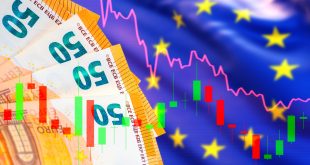The U.S. Dollar’s resilience against the Japanese Yen, with the exchange rate clawing back above the critical 152.00 level, poses a profound challenge to Tokyo’s policymakers. The narrative for this upward momentum remains stubbornly clear: a persistent, wide gulf in interest rates between the U.S. and Japan, exacerbated by a confluence of geopolitical and domestic policy uncertainties.
With the Federal Reserve still battling domestic inflation pressures and the Bank of Japan deliberately holding rates low, the market’s appetite for the dollar’s superior yield makes the path of least resistance for USD/JPY a move to the upside. The real question is not if the Ministry of Finance will act, but where the pain threshold for direct intervention truly lies, and whether their actions can offer more than a fleeting correction.
Intervention Risk: A Game of Volatility
The strength in the currency pair is bringing into sharp focus the looming threat of currency intervention by Japanese authorities. The area around 152.00 to 155.00 has historically been a highly sensitive zone, triggering both verbal warnings and massive direct market operations in the past to stem the yen’s sharp declines.
Despite this historical precedent, a lack of immediate action as the rate pushes higher suggests that Finance Minister Suzuki and his team are prepared to tolerate a weaker yen for longer—a provocative stance that tests the conviction of those betting on a swift reversal.
If the Bank of Japan, under Governor Ueda, maintains its ultra-loose monetary settings, any intervention will be fighting a fundamental battle with one hand tied behind its back. Intervention can certainly generate massive volatility and short-term reversals, but it cannot permanently alter the underlying economic force of a two-country interest rate differential.
U.S. Data Vacuum Complicates the Fed’s Path
Adding a layer of complexity to the currency dynamic is the ongoing U.S. government shutdown. The disruption has created a troubling “data blackout,” delaying the release of key economic indicators like the vital jobs and inflation reports. This vacuum of official, reliable data forces the Federal Reserve to rely on less comprehensive, alternative metrics as it approaches its next policy meeting.
For a data-dependent Federal Open Market Committee, this is a significant handicap. While markets are currently confident that the Fed remains on course to deliver further interest rate cuts this year, the absence of fresh, timely inflation data could make policymakers, such as Chair Jerome Powell, hesitant to adjust policy, preferring to wait for clarity.
A lack of new data could, paradoxically, reduce the near-term volatility typically associated with Fed expectations, but it amplifies the underlying uncertainty that can spook global capital flows.
Geopolitical Sparks and the Yen’s Safe-Haven Status
The yen’s role as a safe-haven asset is undergoing a fascinating test amidst escalating U.S.-China trade rhetoric. Historically, rising global risk and uncertainty—such as a trade war—trigger a “risk-off” environment, prompting investors to unwind carry trades and seek the perceived safety and deep liquidity of the yen, leading to its appreciation.
Yet, recent threats of new U.S. tariffs against China have been met with muted market-wide panic, particularly as U.S. political figures signal a willingness to de-escalate. When optimism about avoiding an all-out trade war returns, the diminished risk appetite weighs on the yen, undercutting its traditional safe-haven role.
This constant oscillation between macro forces—the gravitational pull of the interest rate differential versus the knee-jerk flow into safety—creates a highly volatile and uncertain landscape for the currency pair.
The interplay of these three factors—Japan’s high-stakes intervention risk, the opaque environment for U.S. monetary policy due to the government shutdown, and the diminishing potency of the yen’s safe-haven appeal—paints a picture of extreme market fragility. It serves as a powerful reminder that fundamental policy divergence, especially in a world rife with political instability, is a far more powerful and sustained driver of currency value than any temporary headline.
Market participants should proceed with a heightened degree of vigilance, staying fully informed of both policy statements and unfolding political developments in Washington and Tokyo.

 Noor Trends News, Technical Analysis, Educational Tools and Recommendations
Noor Trends News, Technical Analysis, Educational Tools and Recommendations




